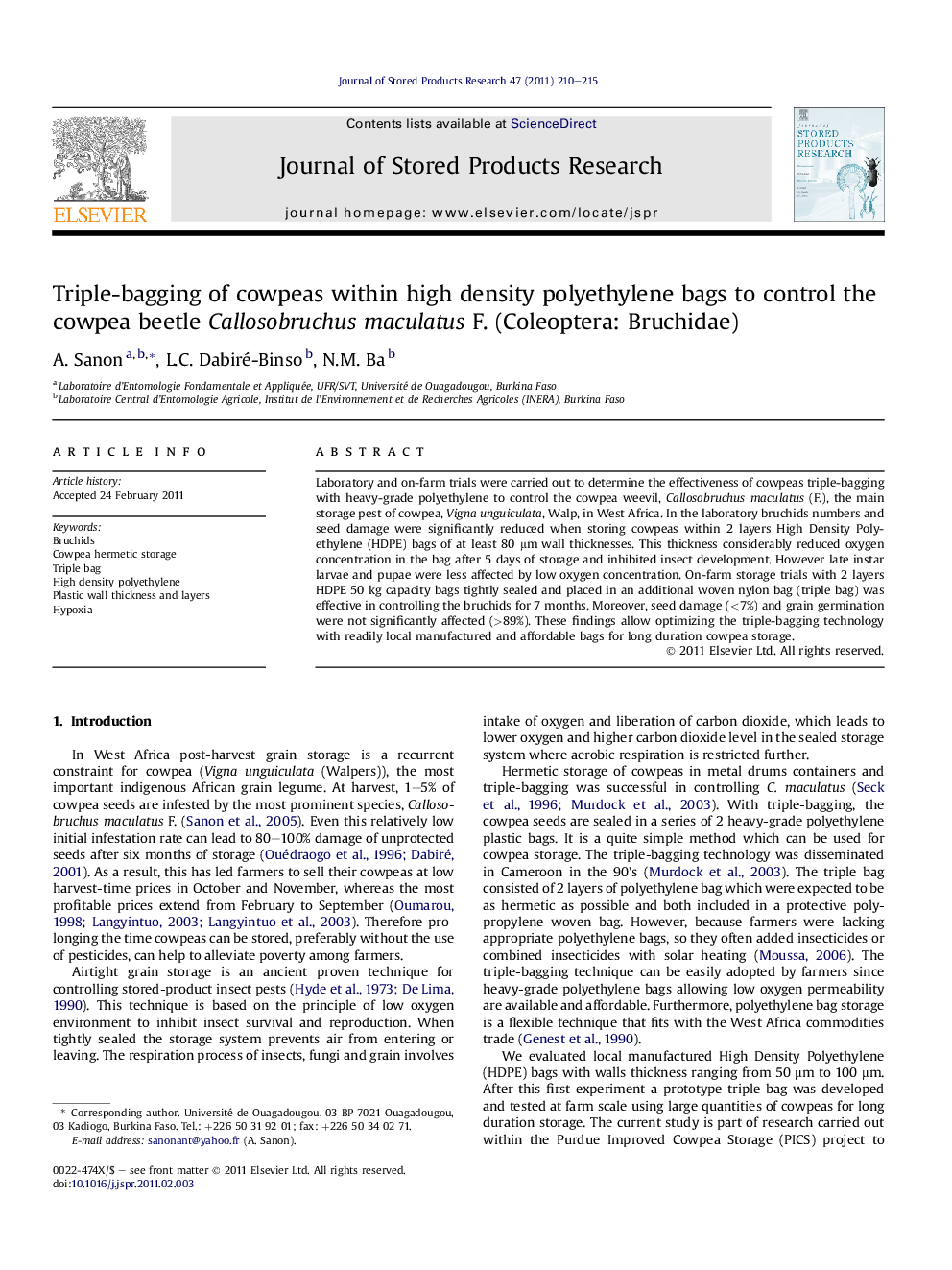| Article ID | Journal | Published Year | Pages | File Type |
|---|---|---|---|---|
| 4517209 | Journal of Stored Products Research | 2011 | 6 Pages |
Laboratory and on-farm trials were carried out to determine the effectiveness of cowpeas triple-bagging with heavy-grade polyethylene to control the cowpea weevil, Callosobruchus maculatus (F.), the main storage pest of cowpea, Vigna unguiculata, Walp, in West Africa. In the laboratory bruchids numbers and seed damage were significantly reduced when storing cowpeas within 2 layers High Density Polyethylene (HDPE) bags of at least 80 μm wall thicknesses. This thickness considerably reduced oxygen concentration in the bag after 5 days of storage and inhibited insect development. However late instar larvae and pupae were less affected by low oxygen concentration. On-farm storage trials with 2 layers HDPE 50 kg capacity bags tightly sealed and placed in an additional woven nylon bag (triple bag) was effective in controlling the bruchids for 7 months. Moreover, seed damage (<7%) and grain germination were not significantly affected (>89%). These findings allow optimizing the triple-bagging technology with readily local manufactured and affordable bags for long duration cowpea storage.
► We tested high density polyethylene for oxygen permeability and bruchid control in stored cowpeas. ► HDPE thickness and layers are key factors reducing oxygen concentration and insect development. ► 2 layers HDPE bags of at least 80μm wall thickness are essential component of an efficient triple bag. ► Triple-bagging was effective for long duration storage of cowpea at farmer scale in Burkina Faso.
